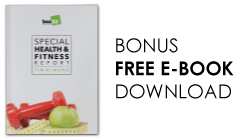At Adaptive Strength (formerly Box33) – Adaptive Strength grip work often forms part of your personal training program.
Why do we place an emphasis on grip?
How does it benefit you? And, what does grip training involve?
The reasons for grip training are many; from simply giving you a good firm handshake to increasing strength and performance and even injury prevention and longevity.
Activities Of Daily Living And Maintaining Independence
Think about your day so far, how many times have you used your hands in order to perform a task? Even if you’re reading this over breakfast and haven’t done much yet, you’ve likely used your hands numerous times already.
Our hands are one of the main ways we interact with our environment and are involved in virtually every activity of daily life.
Some of these tasks are things we all take for granted until we suffer a disabling injury or condition – getting dressed, cleaning your teeth, carrying the shopping and eating are all activities which afford you independence and they all rely on your ability to use your hands.
As we age, the inability to do these kinds of tasks independently is a major cause of entry into care homes or hospitalisation. Now you are shaking your head and thinking that you don’t need superhuman grip strength to hold your cup of coffee or type your email replies.
True, but consider how often you use your hands for tasks and therefore the overall volume of load placed upon them over time. The arm, wrist and hand structure are complex and involves an intricate web of muscles, tendons, ligaments and nerves. Gripping (however lightly) requires the recruitment of 35 muscles, and like any muscles, if we do not train them, they are reduced in strength and more at risk of injury.
Injury Prevention
Inactivity breeds stiffness and inflammation whilst imbalanced usage can create numerous painful issues. I’ll bet you know someone (if it’s not you) with repetitive strain injury, carpal tunnel syndrome or a painful elbow complaint.
Many people who do not play tennis or golf suffer from tennis elbow or golfer’s elbow (or climbers elbow). Both are due to injury and inflammation of the tendons which attach the muscles of the forearm to the bone.
Lateral epicondylitis (tennis elbow) is characterised by pain on the outside of the elbow as it affects the tendons connecting to the outer bony prominence and golfer’s or climber’s elbow is characterised by pain on the inside of the elbow where tendons connect in order to flex the wrist.
Charles Poliquin, recognised as one of the world’s most accomplished strength coaches wrote that common complaints such as these “are often caused by improper strength ratios between the elbow muscles and the forearm muscles. If the elbow flexors, like the biceps and brachialis, are too strong for the forearm flexors, uneven tension accumulates in the soft tissue and results in elbow pain”.
Many jobs now involve typing or using a mouse or laptop trackpad and this can lead to overuse injuries of the wrist and forearm such as repetitive strain injury and carpal tunnel syndrome.
Sports athletes can also suffer such inflammatory conditions due to repetitive stresses from throwing, catching, grappling or pitching. The number one way to reduce your risk of suffering any of these issues is to improve your forearm strength.
The best way to do that?
Varied and balanced grip training, using flexors and extensors. Utilising strength and grip endurance.
There is also some evidence to suggest that grip strength has a significant correlation with the muscle strength of shoulder abduction and external rotation (the ability to lift your arms and turn your palms forward). An increased prevalence of rotator cuff weakness and injury has been noted on the same side as patients with hand injury or disability and this suggests that gripping and using the hand may also offer injury preventing strength through the shoulder and small stabilising muscles of the rotator cuff.
Increased Performance
You are only as strong as your grip!
If you want to be able to lift more then you need to be able to grip more weight.
If you want to throw further then you need to build the radiant tension through the forearm for explosive force.
If you want to complete a challenging climb then you’ll be reliant on good grip strength.
If you are into your martial arts, grip and forearm strength will make you better during grappling and groundwork.
If you train at Adaptive Strength (formerly Box33) then you will already be familiar with the principle of irradiation – creating strength through increased tension – squeezing the opposite fist when you press or squeezing your glutes during push ups and pull ups. Better grip strength allows you to maximise this ability to create radiant tension and push heavier weights.
Really gripping the bar and imagining breaking it in half during a bench press or a pull up for example, allows you to create tension and recruit bigger muscles further up the chain, engaging your back and core muscles. Therefore, increasing your push or pull required for the exercise.
Applying this principle will make you stronger in the gym, on the sports field or other arena and improve your performance.
A Firm Handshake
What says successful and confident like a really firm handshake? If you want to put that confidence out there at your next job interview or important meeting, train that grip and your handshake will be so much more impressive!
Most Importantly Longevity And A Predictor Of Mortality And Disease
You might not be fussed about having a great handshake but I bet you are keen to live a long, disease free life?
Many studies have shown a correlation between reduced grip strength and mortality, cardiovascular death, cardiovascular disease and type 2 diabetes. Back in 2007 the American Journal of Medicine published a study showing that grip strength predicts cause specific mortality in middle aged and elderly persons.
The Prospective Urban Rural Epidemiology (PURE) study performed over 10 years with a large group of participants aged 35-70years, from 18 countries over 5 continents. Part of the study published in the Lancet in 2015 showed grip strength to be a prognostic indicator in all causes of death, death from cardiovascular events and diagnosis of cardiovascular disease.
More recently (2017) The Journal of Gerontology has published a study to show that it is feasible to use low normalised grip strength as a biomarker for cardiometabolic disease and physical disabilities among US and Chinese adults. This is just a few studies which show that poor grip strength could be an indicator of poor health and reduced longevity. If you wish to live long and prosper, get a grip on your grip training now!
The How…
If you train at Adaptive Strength (formerly Box33) then you don’t need to worry about how to plan your grip training because it will be included in your program by your expert coach. Some of it might be obvious, like training with the captains of crush torsion spring grippers, but some will be varied lifts, carries, pulls and pushes. It is important to include both grip strength work and grip endurance. Training will also include the different types of grip (crush, support and pinch) and some forearm strength.
Support Grip
This is the most common type of grip used to hold onto something. You will be training this when you are deadlifting and doing pull ups. Farmer’s carry also uses support grip and builds endurance. This style of grip is trained unconsciously outside of the gym by carrying loads or holding tools. You can also have a little fun with support grip training by hanging, climbing and playing on the monkey bars at the kid’s playground!


Crush Grip
The grip exerted when squeezing something between your fingers and your palm. Crush grip does not use power from the thumb. There are many ways to train this. Simply crushing a ball in the hand or wringing out a wet towel are things you can do at home to train this grip style. We have lots of toys in the gym for training crush grip including grippers, fat grips, numerous styles of lifting handles and rope hoists. Training your crush grip will have your handshake nice and strong in no time and perhaps you can work on a party trick of cracking nuts in your palm!

Pinch Grip
The grip required to hold or squeeze something between thumb and fingers. Pinch grip is required for dexterity and fine motor tasks such as writing, opening jars, turning key in the door etc so it is an important aspect of grip strength for maintaining independence as we age. Pinch grip can be trained by doing plate carries, pinch grip lifts and ripping thick books or decks of cards.


Forearm Strength
Reverse curls, the use of fat grips and bars, wrist curls, jesus curls and other methods will be used to specifically build forearm strength to aid grip training. Get ready for an arm wrestle competition!!


Don’t Forget The Extensors
Doing all this grip training and even the times in life when you exert force through your forearm flexors (home tasks, carrying and playing racquet or club sports) makes it important to also exercise the extensors.
You can do this by doing finger lifts (place your hand palm down on a flat surface and lift each finger individually) and with elastic bands around the fingers to create resistance when trying to open the hand (or we sell specific hand extensor bands).

Another great method is rice bucket hand opening (submerge your closed fists in a bucket of rice and open your fingers against the resistance of the surrounding grains).






